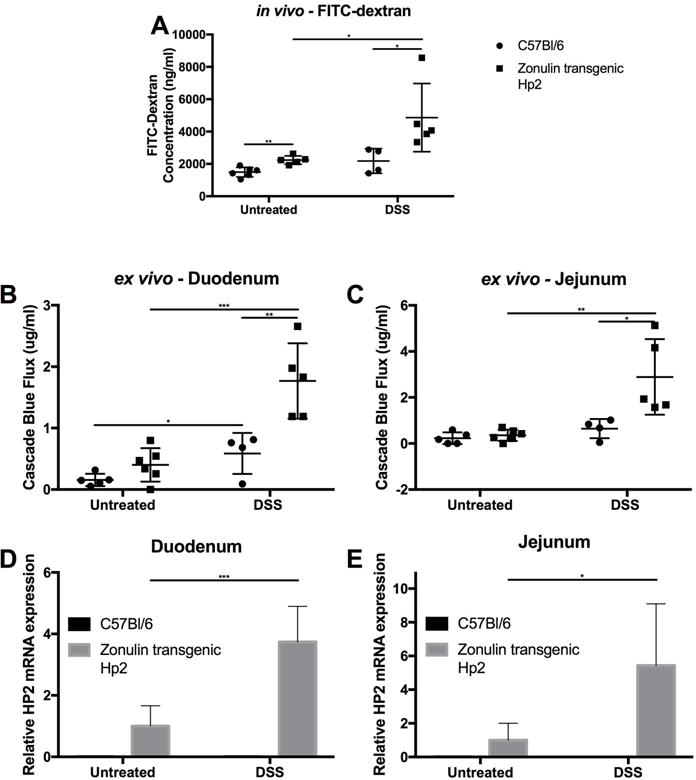Figure 4.

In vivo/ex vivo small intestinal permeability in Ztm and WT mice. (A) In vivo small intestinal permeability was increased in untreated Ztm compared with WT mice. DSS treatment caused further increased permeability in Ztm. Ex vivo measurement of duodenal (B) and jejunal (C) permeability. At baseline, there was a trend of increased duodenal permeability in Ztm (B), while no differences were detected in the jejunum (C). In DSS-treated animals, increased duodenal permeability was detected in both animals, with Ztm showing a more significant increase (C). No changes in jejunal permeability were detected in DSS-treated WT mice, while Ztm showed a significant increase (C). Duodenal and jejunal permeability was significantly higher in DSS-treated Ztm (B & C). (D & E) Relative zonulin mRNA expression in the duodenum (D) and jejunum (E) showed zonulin expression under baseline condition and increased by 4 and 6 fold, respectively, in DSS-treated Ztm (4–6 mice per group). *, P < 0.05; **, P < 0.01; ***, P < 0.001.
